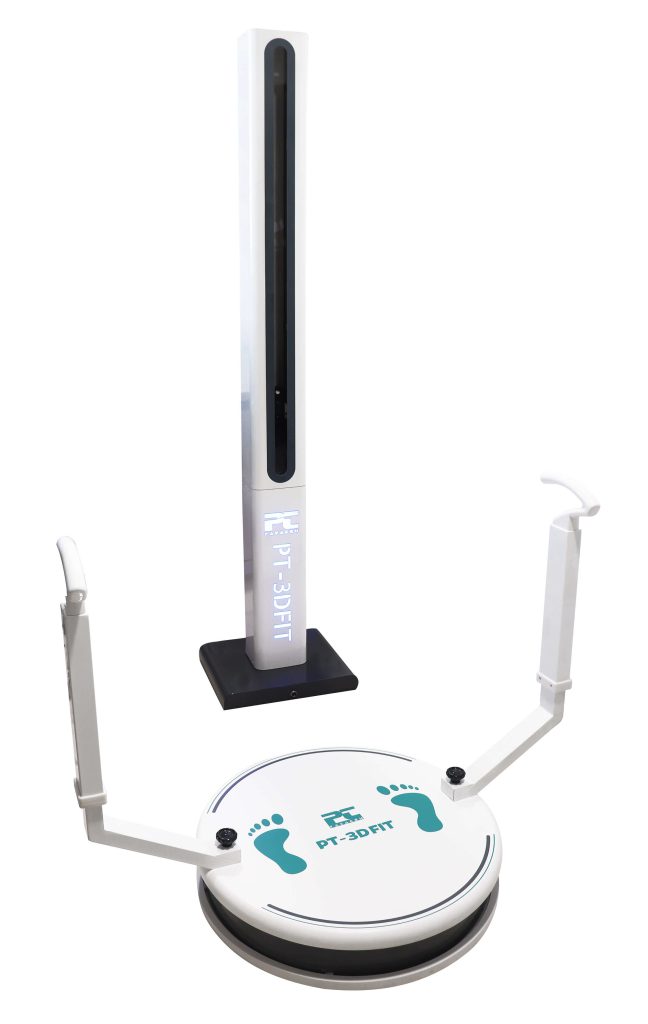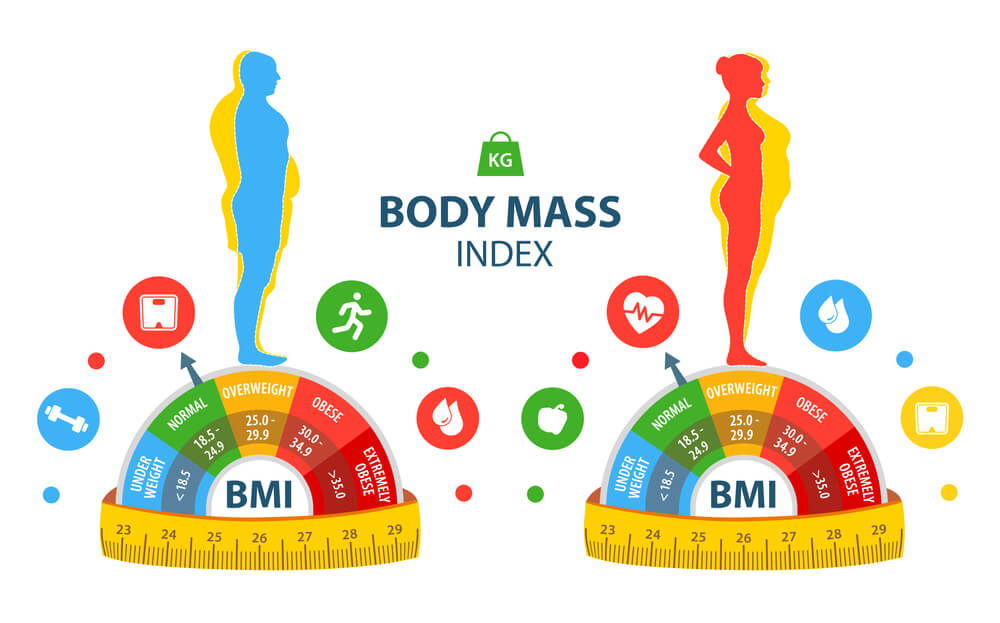Articles
Body Mass Index
Body Mass Index (BMI) serves as a valuable screening tool that helps determine whether an individual’s weight is within a healthy range or if they are at risk of being underweight, overweight, or obese. Deviations from the healthy BMI range can significantly increase health risks. Carrying excess weight can contribute to various health conditions, including type 2 diabetes, high blood pressure, and cardiovascular problems. Conversely, having a body weight that is too low can elevate the risk of malnutrition, osteoporosis, and anemia. Healthcare professionals utilize BMI to track weight status across populations, identify potential concerns in individuals, and provide appropriate recommendations tailored to each person’s unique circumstances.
Advanced technologies, such as 3D body scanners, have emerged as valuable tools for accurately assessing Body Mass Index. These scanners provide precise measurements of body composition, including fat mass, muscle mass, and bone density. Healthcare professionals can obtain more comprehensive and detailed information about an individual’s body composition by incorporating a 3D body scanner into the assessment process. This, in turn, enhances the accuracy of BMI calculations and enables the provision of more personalized recommendations.


PT-3D Fit allows healthcare professionals to:
• Gather more data points and have a better understanding of the complexities of an individual’s body composition.
• Adopt a personalized approach to weight management and promote overall health.
• Conduct a comprehensive assessment of weight status and develop tailored strategies for maintaining or achieving a healthy weight.
Healthcare professionals can offer individuals a more holistic approach to weight management and promote healthier lifestyles through the use of 3D body scanning. This innovative technology empowers healthcare professionals to provide a deeper understanding of body composition, enabling individuals to make informed decisions about their health and well-being.
The Benefits of Knowing Your BMI
Understanding your Body Mass Index (BMI) can provide valuable insights into your overall health and help you monitor health trends over time. Research suggests that a decrease in BMI by approximately 5% of total body weight can lead to improvements in various health conditions, including blood pressure, cholesterol levels, osteoarthritis, and blood sugar regulation.
Body Mass Index serves as a tool for healthcare professionals to assess your overall fitness and evaluate your risk of developing chronic diseases. However, it is important to note that BMI is not the sole determinant of your health, and individual body types may vary. While there are certain concerns associated with using BMI as a measure of health, it remains one of the most widely utilized and trusted methods for assessing general health among the average population.
You can quickly and easily determine whether you are within a healthy weight range or if you need to make lifestyle changes to achieve a healthier weight by knowing your BMI. It is important to consult with your healthcare provider to get a comprehensive understanding of your health status, as they consider various factors beyond Body Mass Index to provide personalized recommendations for your well-being.
Is Body Mass Index an Accurate Predictor of Health?
While Body Mass Index is a widely used measurement for assessing weight status, it is important to consider its limitations, particularly when applied to adults. One of the primary concerns is that BMI does not account for individual factors such as sex, age, muscle mass, bone frame size, or ethnicity, which can significantly influence one’s ideal weight.
The clinical limitations of BMI should be acknowledged when using it as a sole indicator of health. For example, individuals with higher muscle mass may have a higher BMI despite having a healthy body composition. Similarly, older adults may naturally have a higher BMI due to changes in body composition that occur with age, which we will speak about in this article.
It is crucial to recognize that Body Mass Index is just one tool among many in assessing overall health. Healthcare professionals consider a range of factors, including body fat percentage, waist circumference, and other health markers, to obtain a comprehensive picture of an individual’s health status.
While BMI provides a useful starting point for understanding weight status, it should not be the sole determinant of one’s health. Consultation with a healthcare provider is essential to evaluate other relevant factors and develop a personalized approach to achieving and maintaining optimal health.
The Impact of Sex on BMI
When examining Body Mass Index, it is important to consider the influence of sex on body composition. There is a notable difference in body composition between males and females, which is not accounted for by standard BMI calculators. This disparity is primarily due to the fact that women tend to have a higher percentage of body fat compared to men.
Essentially, male and female BMI measurements should be interpreted differently since the ideal body composition varies between the sexes. Men typically have a lower percentage of body fat, with essential body fat ranging from 2% to 5%. On the other hand, women naturally have a higher percentage of body fat, ranging from 10% to 13%.
Consequently, if a male and a female both have a Body Mass Index of 28, it does not necessarily mean they are equally overweight. The difference in body composition between the sexes means that the same BMI value can reflect varying levels of body fat and overall health status.
Therefore, when assessing BMI, it is important to consider the sex of the individual in order to obtain a more accurate understanding of their weight status and health. healthcare professionals take into account these gender differences and utilize additional assessments to provide a comprehensive evaluation of an individual’s overall health and well-being.


The Association Between Age and Body Mass Index
The relationship between age and BMI is important to consider when evaluating weight and health. As individuals age, there are natural changes in body composition, such as a decrease in muscle mass and an increase in visceral fat, even if body weight remains constant. This means that maintaining the same BMI over time does not necessarily indicate a “healthy” weight. For example, if someone has a BMI of 23 at age 35 and still has the same BMI at age 65, they are likely to have more body fat at 65, which increases the likelihood of being overweight. Age-related changes in body composition should be taken into account when assessing weight and overall health.


Does Muscle Mass and Bone Frame Size Affect BMI Measurements?
Muscle mass and bone frame size can indeed impact Body Mass Index measurements. Younger individuals and athletes who have more muscle mass and denser bones may weigh more, leading to a higher BMI. It’s important to note that having higher muscle mass or a larger bone frame doesn’t necessarily indicate being unfit or unhealthy. However, these factors can affect BMI calculations and make them less accurate in predicting exact body fat levels. Since muscle tissue weighs more than fat tissue, individuals with more muscle mass may have a higher BMI even with a lower percentage of body fat. Similarly, individuals with larger bone frames may have higher BMI values due to the additional weight of their bones. It’s crucial to consider these factors when interpreting BMI results and to use additional assessments to obtain a comprehensive understanding of one’s body composition.
Is BMI Affected by Ethnicity?
Ethnicity can influence BMI measurements. Studies have found that Asians with the same BMI as white Europeans tend to have 3 to 5% more total body fat. South Asians, in particular, have higher levels of body fat and are more prone to developing abdominal obesity, which increases their risk of type 2 diabetes and cardiovascular disease. On the other hand, research suggests that black individuals may have higher levels of lean muscle mass and lower levels of body fat compared to white individuals at the same Body Mass Index, potentially reducing their likelihood of developing obesity-related diseases.


BMI for Children and Adolescents
The concerns associated with using Body Mass Index for adults also extend to children and adolescents. Factors such as height and level of sexual maturity influence the relationship between BMI and body fat in this population.
Furthermore, the accuracy of BMI varies significantly depending on the individual child’s body fat. For obese children (BMI for age greater than or equal to the 95th percentile), BMI serves as a reliable indicator of excess body fat. However, among overweight children (BMI-for-age between the 85th and 94th percentiles), elevated BMI levels can be attributed to increased levels of either fat or fat-free mass. Similarly, among relatively thin children, variations in BMI are often due to differences in fat-free mass.


Why Is the Body Mass Index Important?
A low body mass index signals that you may be undernourished. Perhaps your body isn’t absorbing nutrients properly, or perhaps you’re simply not consuming enough calories to support your level of activity. In contrast, a BMI that is on the higher end warns your doctor that you have a higher risk of developing heart disease, diabetes, and several types of cancer than someone with a normal BMI. Your doctor may connect you with a registered dietician who may assist you in regaining control of your weight and lowering your chance of developing health issues.
Conclusion
The body mass index (BMI) serves as a valuable screening tool for assessing weight status and identifying potential health risks. However, it is important to recognize the limitations of BMI, particularly when applied to specific populations such as children, adolescents, and individuals with different body compositions. While BMI provides a useful starting point for understanding weight status and overall health, it should not be the sole determinant of one’s health.
Advanced technologies, such as 3D body scanners, have emerged as valuable tools for accurately assessing BMI and gaining a deeper understanding of an individual’s body composition. These technologies enable healthcare professionals to obtain a comprehensive evaluation of overall health, taking into account factors beyond BMI such as body fat percentage, visceral fat, body muscle mass, total body water, waist-to-hip ratio, bone size, and other health indicators. PT-3D FIT presents all these features and more and provides accurate 3D modeling of body dimensions and muscle volume.
Understanding BMI and its limitations empowers individuals to make informed decisions about their health and well-being. While Body Mass Index provides insights into weight status and potential health risks, it is essential to consider additional factors, including sex, age, muscle mass, bone frame size, and ethnicity, to obtain a comprehensive understanding of one’s body composition and overall health. Individuals can strive for optimal health and reduce the risk of developing chronic diseases associated with excess weight by incorporating a personalized approach to weight management.

